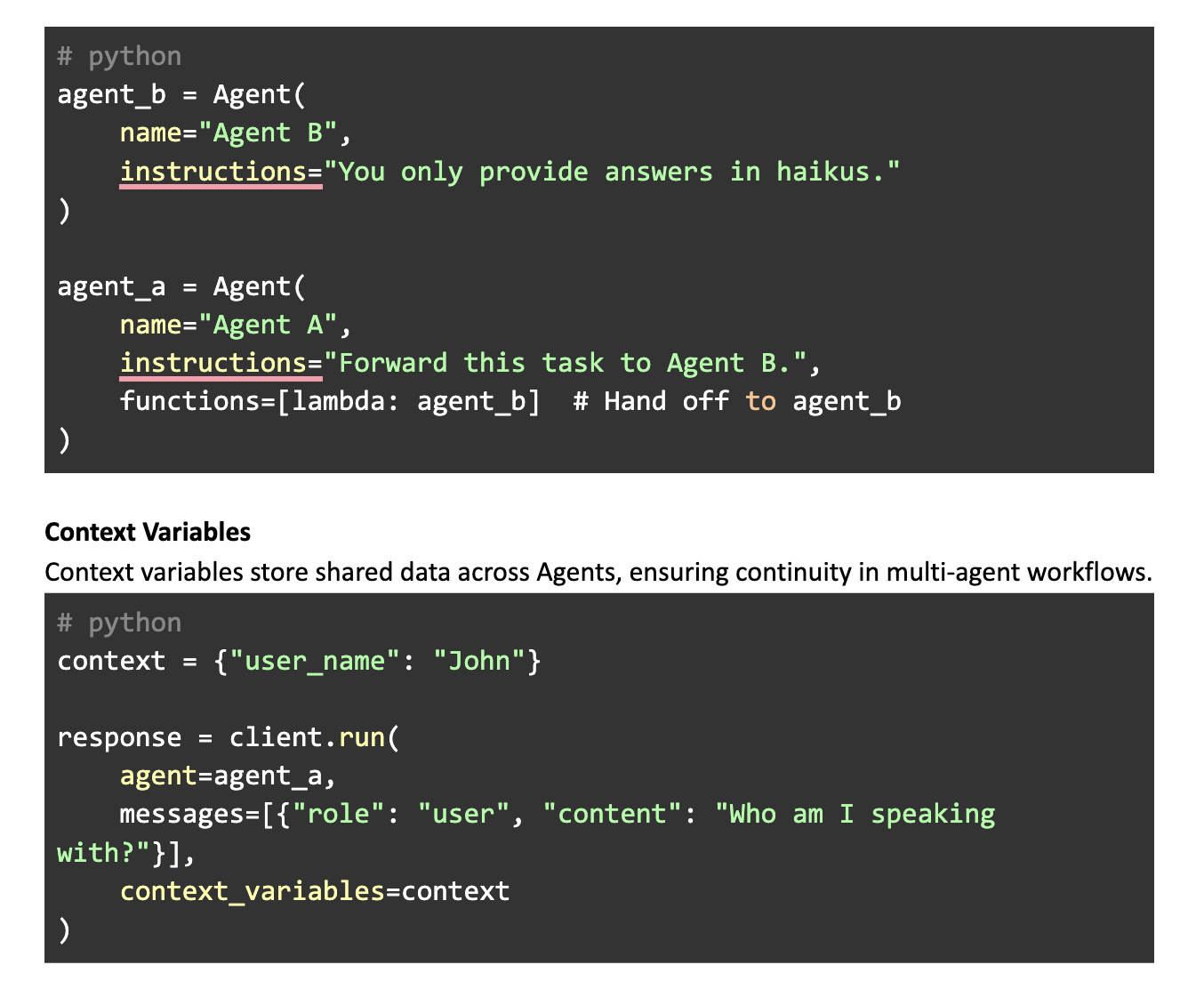
Swarm: An Innovative Framework for Multi-Agent Systems
Swarm is an open-source framework created by the OpenAI Solutions team. It helps developers learn and experiment with multi-agent systems in a simple and user-friendly way. Swarm focuses on making it easy for autonomous agents to work together, share tasks, and manage their activities effectively.
Key Benefits of Swarm
- Educational Tool: Designed for learning and experimentation.
- Modular Design: Users can create workflows where agents collaborate easily.
- Stateless Operation: Ensures security and flexibility.
Core Components of Swarm
Agents
Agents are the main units in Swarm, each performing specific tasks. They consist of:
- Instructions: Define what the agent does.
- Functions: Actions the agent can perform.
- Handoffs: Allow agents to pass tasks to one another.
Context Variables
These variables store shared information between agents, ensuring smooth workflows.
How Swarm Works
Swarm operates through a structured process:
- Message Processing: The current agent handles user messages.
- Function Execution: Executes any functions defined by the agent.
- Agent Switching: Transfers control to another agent if needed.
- Context Management: Updates shared data throughout the interaction.
- Response Delivery: Sends the final response to the user.
Getting Started with Swarm
Installation
Install Swarm from GitHub:
pip install git+https://github.com/openai/swarm.gitBasic Setup
To set up Swarm, import the library, create agents, and run the interaction:
from swarm import Swarm, AgentAdvanced Features
- Streaming Responses: Get real-time responses from agents.
- Debugging: Identify and fix issues in the process.
Conclusion
Swarm is a lightweight and educational framework that helps developers understand and implement multi-agent orchestration. While it is not intended for production use, its focus on simplicity and modularity makes it an excellent resource for learning and prototyping.
Explore AI Solutions
To enhance your business with AI, consider the following steps:
- Identify Automation Opportunities: Find areas where AI can improve customer interactions.
- Define KPIs: Measure the impact of your AI initiatives.
- Select an AI Solution: Choose tools that fit your needs.
- Implement Gradually: Start small, gather data, and expand.
For AI management advice, contact us at hello@itinai.com. For ongoing insights, follow us on Telegram or @itinaicom.



























